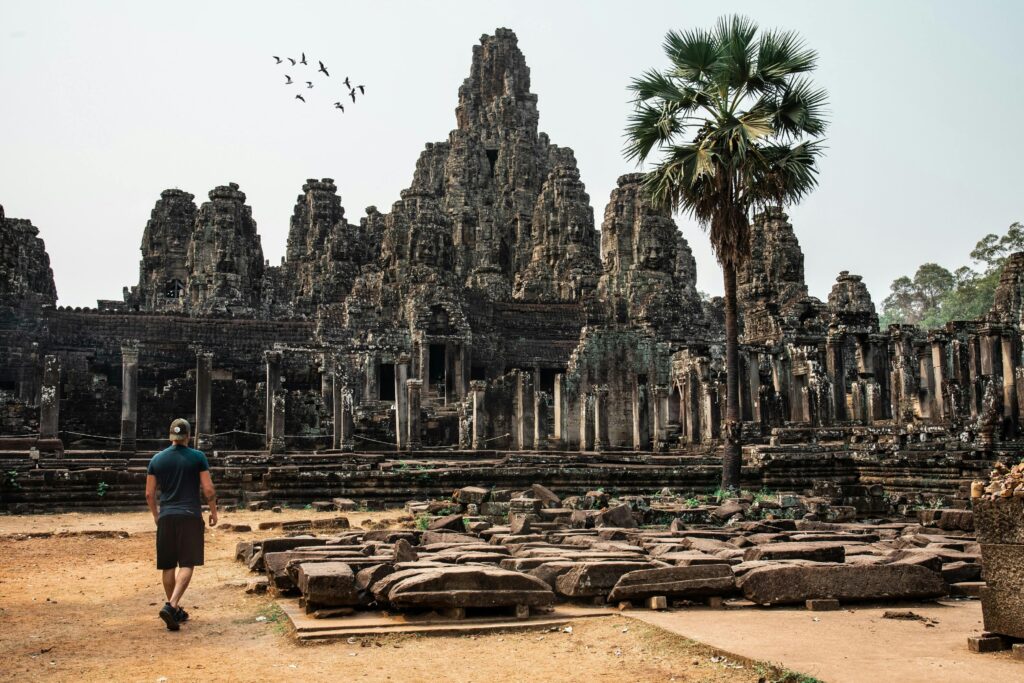The Philippines’ Chocolate Hills Symbolize Geologic Wonders
The Philippines’ Bohol province captivates with a surreal landscape of cone-shaped Chocolate Hills. To learn more about this landmark from the locals, I used a translator to translate from English into Tagalog. Over 1,200 uniform grassy mounds dot the rolling terrain, transforming in dry seasons to hues evoking their sweet name. While their formation puzzles geologists, theories cite ocean reefs or volcanic activity sculpting the symmetrical shapes over eons. As one of the Philippines’ most iconic vistas, the Chocolate Hills draw hikers and lookouts to admire nature’s wonder.
The Chocolate Hills hold linguistic significance as well, with their name originating from the Tagalog phrase “tsokolate bundok.” As one of the Philippines’ national languages, Tagalog phrases and terminology often become symbolic namesakes for famous sites. The Chocolate Hills represent a proud symbol of the Bohol region’s natural marvels and Tagalog linguistic heritage.
Easter Island’s Mystifying Moai Statues
Scattered across windswept Easter Island stand nearly 1,000 carved figures known as moai. How these colossal statues arrived mystifies historians. Carved from volcanic rock between 1100-1680 CE, the moai range from 10 to 40 feet tall. Their production then abruptly stopped, and all were toppled during tribal conflict by 1868. Archaeologists believe Polynesians voyaged over 2,000 miles to first settle the remote Chilean territory around 300 CE. But how they quarried, transported and erected the giant moai using only stone tools baffles experts. Recent, contested theories suggest the statues “walked” upright to sites leveraging ropes. While their purpose also puzzles historians, the moai likely embodied sacred ancestors and projected power for ruling tribes. The moai now symbolize Easter Island’s living culture and enduring aura of enigma.
Cambodia’s Angkor Wat Combines Hindu and Buddhist History
The magnificent Angkor Wat temple complex reveals Cambodia’s religious history via stone. Originally constructed as a Hindu temple in 1150 CE, Angkor Wat actually derives its name from the Sanskrit word for “city.” Its familiar silhouette graces Cambodia’s flag today. Angkor Wat dazzles visitors with an epic moat, graceful spires and extensive bas reliefs depicting Hindu myths. In the 13th century, Theravada Buddhism began supplanting Hinduism across the Khmer Empire. Angkor Wat adapted too. Its central shrine once held a statue of Vishnu which Buddhist monks later replaced with a Buddha figure. This religious shift persisted, evident also in Angkor Thom’s serene Buddha faces. Wandering Angkor’s stone temples and jungle ruins lets visitors trace Cambodia’s theological past firsthand.
To help international visitors access and understand the complex history encarved in Angkor Wat’s stones, professional translation services like Lingvanex translator offer provide AI-powered accurate translation over 100 languages. Whether through translating maps and brochures or recording multilingual narration of key events, these services unlock Angkor Wat’s symbolic layers for global travelers regardless of native tongue. Appreciating the intricate fusion of Hindu and Buddhist elements relies on quality translation to bridge linguistic and cultural barriers.

Egypt’s Majestic Pyramids Lure Since Antiquity
No landmarks capture our imagination quite like Egypt’s pyramids. Constructed as towering tombs for pharaohs, the pyramids symbolized divine power while securing legacies for eternity. Their proportions obeyed the “golden ratio” desired by ancient priests. The Great Pyramid soars nearly 500 feet, miraculously built of 2.3 million limestone and granite blocks. While the largest Khufu pyramid anchors the Giza complex, two nearby pyramids honor Khafre and Menkaure. As one of the Seven Wonders of the Ancient World, the pyramids have lured travelers from Greek historian Herodotus to Napoleon to present. Climbing through their narrow passages reminds us of pharaohs’ quests for immortality and the human compulsion to create on a godly scale.
Whether cloaked in mystery, shaped by spiritual movements or demonstrating humanity’s vision, landmarks reveal more than postcard views. They offer windows into our complex history.
